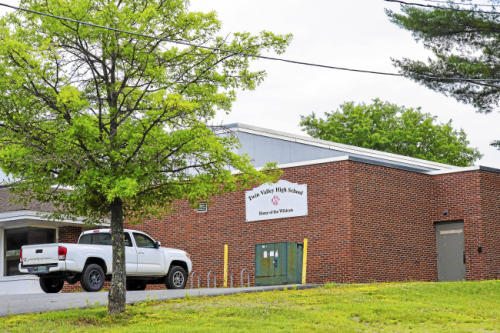
Editor’s note: This article by Chris Mays was first published in the Brattleboro Reformer on Oct. 5, 2016.
[W]ILMINGTON — A draft study report detailing Windham Southwest Supervisory Union merger plans was returned, with the Agency of Education asking for more information.
“I am unable to recommend this proposal to the State Board of Education at this time for a number of reasons,” Vermont Secretary of Education Rebecca Holcombe wrote to WSSU Superintendent Chris Pratt. “Overall, the proposal appears to present a plan to maintain the status quo — that is, it proposes to make changes to the governance structure, but not to take advantage of the flexibility afforded by that structure to make any true systemic changes to address identified issues regarding educational opportunities, and operational and fiscal efficiencies in your region.”
Wilmington and Whitingham already consolidated their schools, but not yet their school districts. Both towns were sending their students to Twin Valley High School when voters approved of combining the elementary schools in 2011. They are joined in the WSSU by districts that operate elementary schools in Halifax, Readsboro and Stamford. Searsburg, also in the supervisory union, does not have a school but the district has a school board.
A study report was approved by the supervisory union’s Southern Valley and Twin Valley subcommittees, which explored how the school districts could merge in order to comply with Act 46. The education law mandates the consolidation of school districts statewide with the goal of improving equities among students and finding efficiencies.
The WSSU’s idea had been to merge the Wilmington and Whitingham school districts and run a “side-by-side” district with the other school districts in the supervisory union. “Side-by-side” refers to a governance structure that meets the state’s goals by merging two or more small districts that attach to a larger district and share services.
The letter from Holcombe was discussed during a Twin Valley School Board meeting on Sept. 27. The Reformer obtained a copy later.
“The proposal contains no analysis of the current situation in your region and the ways in which the districts do or do not meet the Act 46 goals of increased and equitable access to excellent educational opportunities, fiscal and operationally efficiency, and enhanced transparency and accountability,” Holcombe said. “The proposal contains no analysis of the options available to address the issues identified in the current structure and no proposed plan to address those issues.”
Those issues include declining enrollment; decreasing educational opportunities; inequity of opportunities available to students when compared within the supervisory union, region and state; higher-than-average turnover rates for teachers and administrators, and higher-than-average overhead costs.
The proposal, Holcombe said, did not discuss opportunities the study committee provided for public engagement. There was no mention of concerns raised by the public through meetings nor “ways in which the study committee believes that the report and proposed articles address the concerns,” Holcombe’s letter stated.
Districts formed under the new law create articles of agreement. Residents must approve of the merger by voting on the document.
Also missing from the proposal, according to Holcombe, were explanations about conversations with other districts in the region and reasoning for why similarly structured districts outside the supervisory union were not included.
The Agency of Education is “available to work more closely with you the study committee as the subcommittees continue to analyze and consider all available options,” Holcombe said.
“We suggest that the Study Committee refer to the guidance issued by the State Board of Education that lays out the kind of analysis it expects.
“This is important now that merger discussions have moved away from the SU-centric discussions of union high schools and their sending elementary school districts during the ‘Accelerated Phase’ and have entered phases where it is crucial that conversations are more regional in nature,” Holcombe said, referring to the state’s timelines that offered the most appealing tax breaks to districts that merged in the first phase.
Districts that did so by 2017 would qualify for a 10 cent reduction for their homestead taxpayers for one year. The next phase will offer 8 cents to merged districts’ residents for a year.
